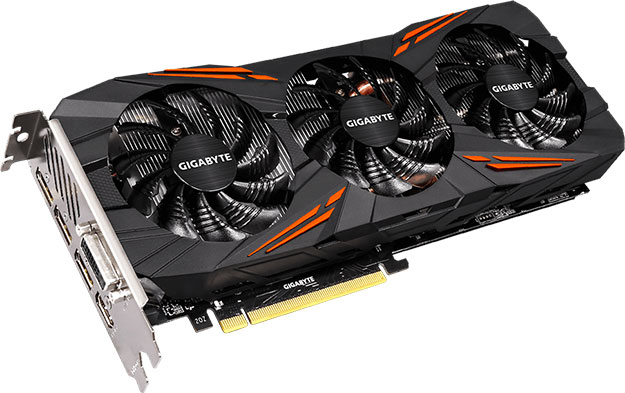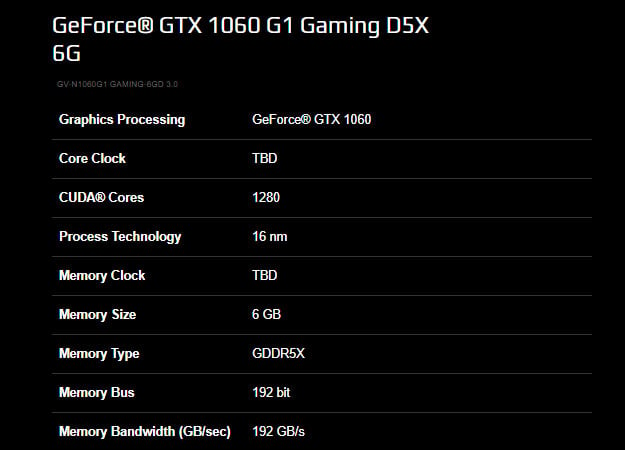Gigabyte Steps Up With GDDR5X-Strapped GeForce GTX 1060 G1 Gaming D5X 6G Graphics Card

Around a week ago, NVIDIA quietly updated its GeForce GTX 1060 product page to include GDDR5X memory as an option, meaning there is yet another version of one of the most popular mid-range graphics cards out there. When would we start to see new cards sport the upgraded memory? Right now, as it turns out.
Gigabyte wasted no time implementing GDDR5X memory onto a custom cooled model, the GeForce GTX 1060 G1 Gaming D5X 6G. For anyone who is not familiar with the GeForce GTX 1060 line, it's primarily available in 6GB and 3GB variants, though there is also a 5GB model floating around in China. All of them use GDDR5 memory, clocked at either 8Gbps or 9Gbps. The GeForce GTX 1070 Ti and GeForce GTX 1070 also both use GDDR5 memory.
Previously, GDDR5X memory was reserved for the GeForce GTX 1080 and above. Not anymore. The question is, how will the bump to GDDR5X on the GeForce GTX 1060 affect performance, and we don't have an answer to that yet. The benefit of bumping up to GDDR5X is that it's potentially faster, and should result in a bump in memory bandwidth.

Gigabyte's products page for the new SKU isn't entirely straightforward. It confirms the new card is in fact using GDDR5X memory, and suggests a memory bandwidth of 192GB/s, but Gigabyte coyly filled out the memory clock field on the spec sheet with "TBD" (to be determined). It's possible that the memory bandwidth claim is wrong—it all depends on the memory speed.
To calculate memory bandwidth, you divide the memory interface width (192-bit) by 8, then multiply the result with the memory clock frequency. For reference, the GeForce GTX 1080 originally shipped with 8GB of GDDR5X memory running at 10Gbps, then later gave its partners the option to select faster 11Gbps chips. Micron also manufacturers GDDR5X memory clocked at 12Gbps. So, here's what we're looking at out of those three speeds:
- 192 / 8 = 24. 24 x 10,000 = 240,000 (240GB/s)
- 192 / 8 = 24. 24 x 11,000 = 264,000 (264GB/s)
- 192 / 8 = 24. 24 x 12,000 = 288,000 (288GB/s)
All three are an improvement over the original (8Gbps) and later revision (9Gbps) of the GeForce GTX 1060, with memory bandwidths of 192GB/s and 216GB/s, respectively. Gigabyte is claiming the same memory bandwidth as the original version though.
We'll have to wait and see what kind of specs Gigabyte's new card actually brings to the table, as well price.

